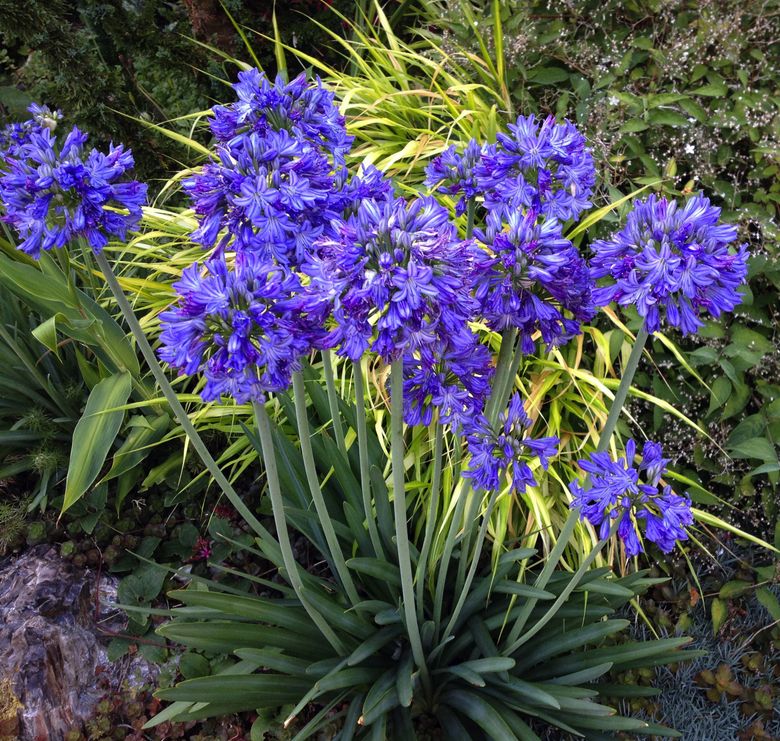Agapanthus Varieties: Choosing the most effective for Your Landscape
Agapanthus Varieties: Choosing the most effective for Your Landscape
Blog Article
Letting Loose the Secret to Successful Agapanthus Growing: Tips and Tricks for a Flourishing Yard
In the world of horticulture, cultivating agapanthus effectively requires a calculated method that encompasses various aspects of plant care. By understanding the subtleties of agapanthus farming, one can develop an atmosphere where these plants grow and flower perfectly.
Growing Agapanthus: Ideal Practices
When growing Agapanthus, appropriate dirt preparation is vital for making sure effective growth and development of these attractive blossoms. Agapanthus, generally referred to as Lily of the Nile or African lily, prospers in well-draining soil with a somewhat acidic to neutral pH level - Agapanthus. Before planting, it is vital to modify hefty clay dirts with raw material such as compost or peat moss to improve water drainage and provide vital nutrients for the plants
To plant Agapanthus, select a place that gets full sunlight to partial color, as this will certainly advertise healthy and balanced growth and bountiful flowering. Dig an opening twice the diameter of the plant's origin round and put the Agapanthus at the exact same deepness it was previously expanding. Carefully backfill the hole with dirt, pressing down firmly to eliminate any kind of air pockets around the roots.
Water the recently planted Agapanthus completely and proceed to keep the dirt uniformly moist, especially during the plant's active growing period. Agapanthus. Applying a balanced fertilizer once a month can even more sustain the plant's development and flowering. By complying with these best practices for planting Agapanthus, you can produce a magnificent screen of these captivating flowers in your yard
Ideal Soil Issues for Agapanthus
For ideal growth and flowering success of Agapanthus plants, making certain the soil conditions are suitable is crucial. Agapanthus chooses soil that is abundant in nutrients, so integrating a balanced fertilizer throughout the growing season can advertise healthy and balanced growth and dynamic blooms.

Watering and Feeding Tips
To make certain healthy and balanced development and lively blossoms, proper watering and fertilizing techniques are essential for effective Agapanthus cultivation. Agapanthus plants profit from normal watering, particularly during the growing period.
When it involves feeding Agapanthus, a well balanced fertilizer with equivalent components nitrogen, phosphorus, and potassium can be applied in the spring to promote healthy and balanced development and flowering. Slow-release fertilizers are perfect for giving nutrients slowly over a prolonged period. Prevent over-fertilizing, as this can cause excessive foliage growth at the expense of blossoms.
In addition, integrating organic matter like compost into the soil can improve nutrient degrees and boost dirt structure, aiding in the total wellness of the Agapanthus plants. By following these watering and feeding ideas, gardeners can ensure their Agapanthus plants flourish and produce sensational screens of blossoms.
Trimming and Deadheading Strategies
Correct pruning and deadheading techniques play an essential duty in keeping the wellness and looks of check out here Agapanthus plants, complementing the crucial methods of watering and feeding for successful cultivation. Pruning Agapanthus includes eliminating spent flower heads, dead or yellowing fallen leaves, and total shaping of the plant to promote far better growth. Deadheading, the process of eliminating faded blossoms, not just boosts the plant's look yet additionally motivates further blooming.
When deadheading Agapanthus, it is advisable to snip off the blossom stem at the base utilizing sharp, tidy shears. This process reroutes the plant's power from seed manufacturing back right into origin and foliage development, promoting a much healthier and a lot more durable plant. Routine deadheading can extend the blooming period of Agapanthus and avoid self-seeding, which can cause congestion.
In regards to pruning, Agapanthus usually take advantage of a light trim after blooming to tidy up the plant and urge fresh development. Cutting back the invested blossom stems and getting rid of any dead or broken foliage assists preserve the plant's vitality and overall look. However, it is essential to prevent view publisher site reducing right into the crown of the plant, as this can damage its wellness.

Protecting Agapanthus From Vermins and Diseases
Applying reliable pest and condition monitoring approaches is critical to safeguarding the wellness and vigor of Agapanthus plants in cultivation. One usual insect that impacts Agapanthus is the Agapanthus borer, a caterpillar that passages right into the plant, triggering damages to the leaves and blossoms.
In addition to pests, Agapanthus are prone to diseases such as origin rot and fungal leaf places. By remaining Going Here attentive and dealing with insect and condition concerns without delay, gardeners can help their Agapanthus grow and grow.

Verdict
Finally, effective growing of agapanthus requires appropriate growing techniques, ideal soil conditions, ample watering and feeding, routine trimming and deadheading, and protection from parasites and conditions. By following these techniques and tips, garden enthusiasts can make certain a prospering yard loaded with stunning agapanthus flowers. Agapanthus. Bear in mind to maintain constant treatment and interest to information to advertise the health and long life of these sensational plants
When growing Agapanthus, appropriate dirt prep work is crucial for making certain successful growth and growth of these beautiful blossoms.Water the recently planted Agapanthus completely and continue to keep the dirt uniformly moist, especially during the plant's energetic expanding period.For optimum development and growing success of Agapanthus plants, making certain the dirt conditions are suitable is crucial. When growing or transplanting Agapanthus, ensure the soil is well-prepared to provide the essential foundation for the plants to develop themselves successfully. One usual parasite that affects Agapanthus is the Agapanthus borer, a caterpillar that tunnels into the plant, causing damages to the fallen leaves and blossoms.
Report this page